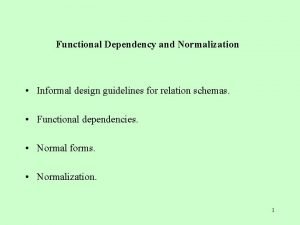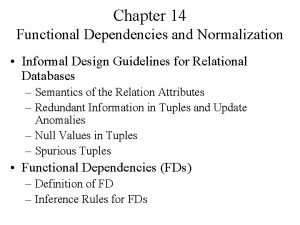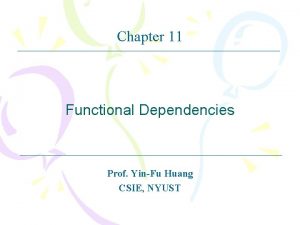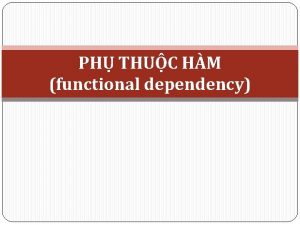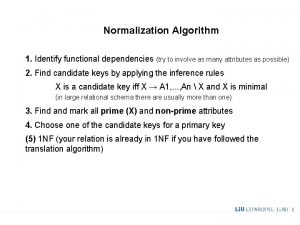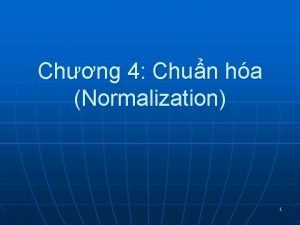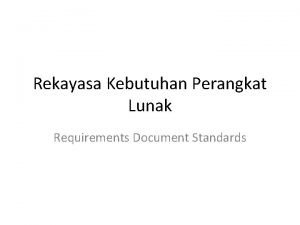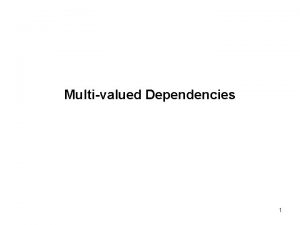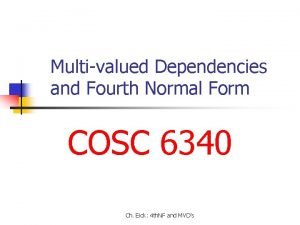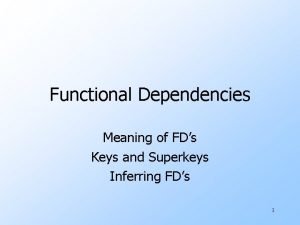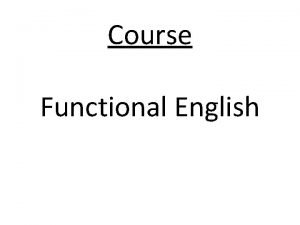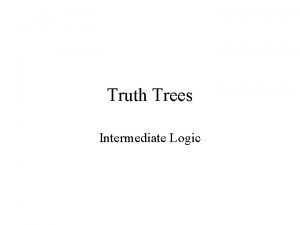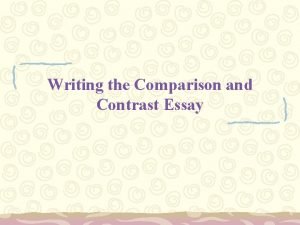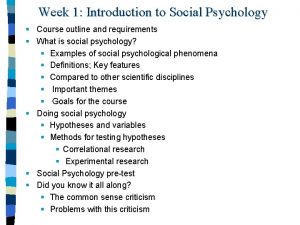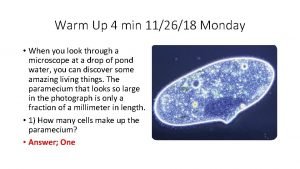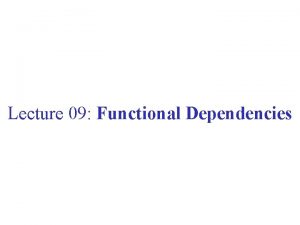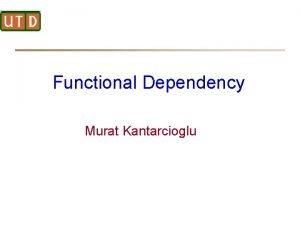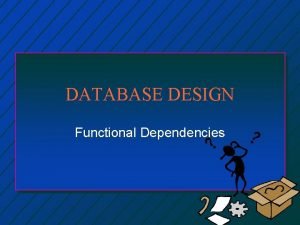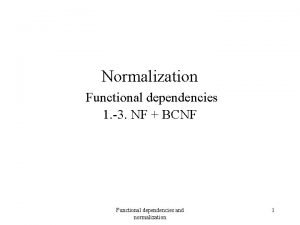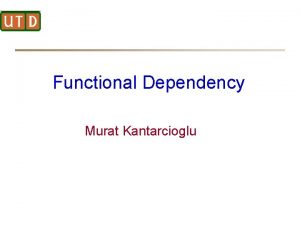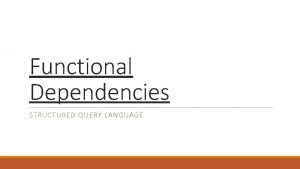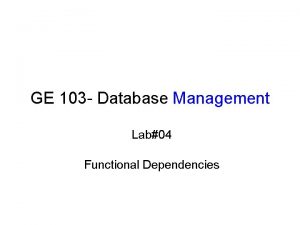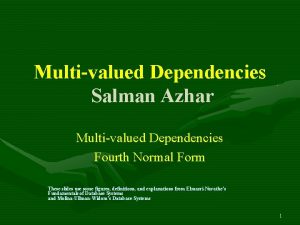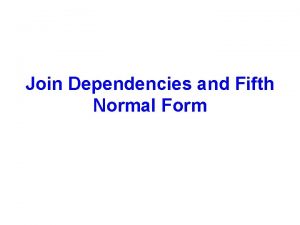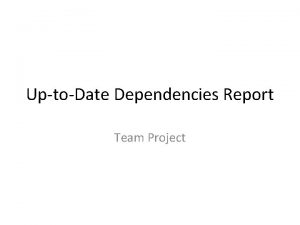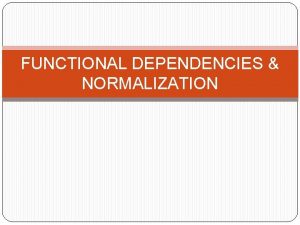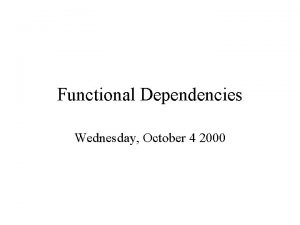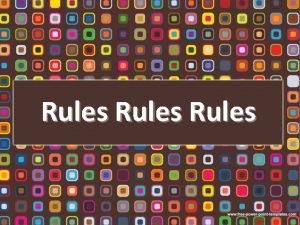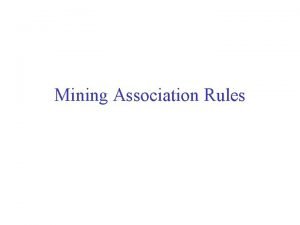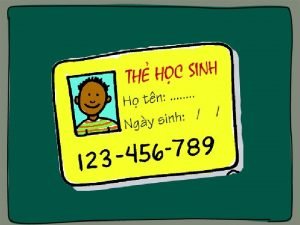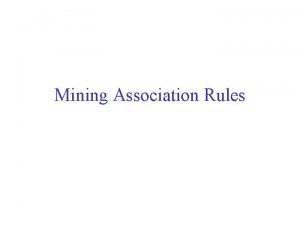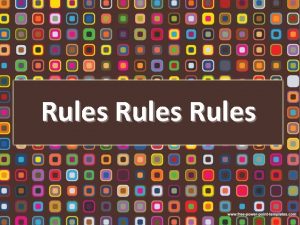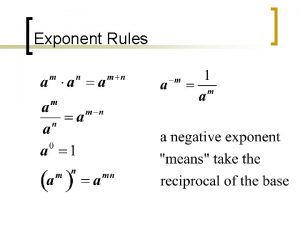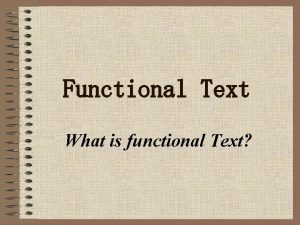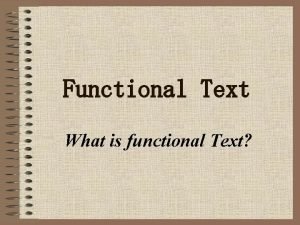Functional Dependencies Outline Functional dependencies 3 4 Rules




































- Slides: 36

Functional Dependencies

Outline • Functional dependencies (3. 4) • Rules about FDs (3. 5) • Design of a Relational schema (3. 6)

Relational Schema Design Conceptual Model: name Product price Relational Model: plus FD’s Normalization: Eliminates anomalies Person buys name ssn

Functional Dependencies Definition: A 1, . . . , Am B 1, . . . , Bn holds in R if: t, t’ R, (t. A 1=t’. A 1 . . . t. Am=t’. Am t. B 1=t’. B 1 . . . t. Bm=t’. Bm ) R A 1 . . . Am B 1 . . . Bm t t’ if t, t’ agree here then t, t’ agree here

Important Point! • Functional dependencies are part of the schema! • They constrain the possible legal data instances. • At any point in time, the actual database may satisfy additional FD’s.

Examples Emp. ID E 0045 E 1847 E 1111 E 9999 Name Smith John Smith Mary Phone 1234 9876 1234 Position Clerk Salesrep Lawyer • Emp. ID Name, Phone, Position • Position Phone • but Phone Position

Formal definition of a key • A key is a set of attributes A 1, . . . , An s. t. for any other attribute B, A 1, . . . , An B • A minimal key is a set of attributes which is a key and for which no subset is a key • Note: book calls them superkey and key

Examples of Keys • Product(name, price, category, color) name, category price category color Keys are: {name, category} and all supersets • Enrollment(student, address, course, room, time) student address room, time course student, course room, time Keys are: [in class]

Inference Rules for FD’s A 1 , A 2, … An B 1, B 2, … B m Splitting rule and Combing rule Is equivalent to A 1 , A 2, … An B 1 A 1 , A 2, … An B 2 … A 1 , A 2, … An Bm A 1 . . . Am B 1 . . . Bm

Inference Rules for FD’s (continued) A 1 , A 2, … An A Trivial Rule i where i = 1, 2, . . . , n A 1 Why ? . . . Am

Inference Rules for FD’s (continued) Transitive Closure Rule If A 1 , A 2, … An and B 1, B 2, … B m C , C …, C then A 1 , A 2, … An C , C …, C Why ? B , B …, B 1 2 1 1 m 2 2 p p


• Enrollment(student, major, course, room, time) student major, course room course time What else can we infer ? [in class]

Closure of a set of Attributes Given a set of attributes {A 1, …, An} and a set of dependencies S. Problem: find all attributes B such that: any relation which satisfies S also satisfies: A 1, …, An B The closure of {A 1, …, An}, denoted {A 1, …, An} +, is the set of all such attributes B

Closure Algorithm Start with X={A 1, …, An}. Repeat until X doesn’t change do: if B 1, B 2, … B n B, B, …B 1 2 n C is not in X then add C to X. C is in S, and are all in X, and

Example R(A, B, C, D, E, F) A B A D B A F C E D B Closure of {A, B}: X = {A, B, } Closure of {A, F}: X = {A, F, }

Why Is the Algorithm Correct ? • Show the following by induction: – For every B in X: • A 1, …, An B • Initially X = {A 1, …, An} -- holds • Induction step: B 1, …, Bm in X – Implies A 1, …, An B 1, …, Bm – We also have B 1, …, Bm C – By transitivity we have A 1, …, An C • This shows that the algorithm is sound; need to show it is complete

Relational Schema Design (or Logical Design) Main idea: • Start with some relational schema • Find out its FD’s • Use them to design a better relational schema

Relational Schema Design Recall set attributes (persons with several phones): Name SSN Phone. Number City Fred 123 -45 -6789 206 -555 -1234 Seattle Fred 123 -45 -6789 206 -555 -6543 Seattle Joe 987 -65 -4321 908 -555 -2121 Westfield Joe 987 -65 -4321 908 -555 -1234 Westfield SSN Name, City, but not SSN Phone. Number Anomalies: • Redundancy = repeat data • Update anomalies = Fred moves to “Bellvue” • Deletion anomalies = Fred drops all phone numbers: what is his city ?

Relation Decomposition Break the relation into two: Name SSN City Fred 123 -45 -6789 Seattle Joe 987 -65 -4321 Westfield SSN Phone. Number 123 -45 -6789 206 -555 -1234 123 -45 -6789 206 -555 -6543 987 -65 -4321 908 -555 -2121 987 -65 -4321 908 -555 -1234

Relational Schema Design Conceptual Model: name Product price Relational Model: plus FD’s Normalization: Eliminates anomalies Person buys name ssn

Decompositions in General R(A 1, . . . , An) Create two relations R 1(B 1, . . . , Bm) and R 2(C 1, . . . , Cp) such that: B 1, . . . , Bm C 1, . . . , Cp = A 1, . . . , An and: R 1 = projection of R on B 1, . . . , Bm R 2 = projection of R on C 1, . . . , Cp

Incorrect Decomposition • Sometimes it is incorrect: Name Price Category Gizmo 19. 99 Gadget One. Click 24. 99 Camera Double. Click 29. 99 Camera Decompose on : Name, Category and Price, Category

Incorrect Decomposition Name Category Price Category Gizmo Gadget 19. 99 Gadget One. Click Camera 24. 99 Camera Double. Click Camera 29. 99 Camera When we put it back: Cannot recover information Name Price Category Gizmo 19. 99 Gadget One. Click 24. 99 Camera One. Click 29. 99 Camera Double. Click 24. 99 Camera Double. Click 29. 99 Camera

Normal Forms First Normal Form = all attributes are atomic Second Normal Form (2 NF) = old and obsolete Third Normal Form (3 NF) = this lecture Boyce Codd Normal Form (BCNF) = this lecture Others. . .

Boyce-Codd Normal Form A simple condition for removing anomalies from relations: A relation R is in BCNF if: Whenever there is a nontrivial dependency A 1, . . . , An B in R , {A 1, . . . , An} is a key for R In English (though a bit vague): Whenever a set of attributes of R is determining another attribute, should determine all the attributes of R.

Example Name SSN Phone. Number City Fred 123 -45 -6789 206 -555 -1234 Seattle Fred 123 -45 -6789 206 -555 -6543 Seattle Joe 987 -65 -4321 908 -555 -2121 Westfield Joe 987 -65 -4321 908 -555 -1234 Westfield What are the dependencies? SSN Name, City What are the keys? {SSN, Phone. Number} Is it in BCNF?

Decompose it into BCNF Name SSN City Fred 123 -45 -6789 Seattle Joe 987 -65 -4321 Westfield SSN Phone. Number 123 -45 -6789 206 -555 -1234 123 -45 -6789 206 -555 -6543 987 -65 -4321 908 -555 -2121 987 -65 -4321 908 -555 -1234 SSN Name, City

Summary of BCNF Decomposition Find a dependency that violates the BCNF condition: A 1 , A 2, … An B 1, B 2, … B m Heuristics: choose B 1 , B 2, … Bm“as large as possible” Decompose: Is there a 2 -attribute relation that is not in BCNF ? Others R 1 A’s B’s R 2 Continue until there are no BCNF violations left.

Example Decomposition Person(name, SSN, age, hair. Color, phone. Number) SSN name, age hair. Color Decompose in BCNF (in class): Step 1: find all keys Step 2: now decompose

Other Example • R(A, B, C, D) A • • B, B C Key: A, D Violations of BCNF: A B, A C, A BC Pick A BC: split into R 1(A, BC) R 2(A, D) What happens if we pick A B first ?

Correct Decompositions A decomposition is lossless if we can recover: R(A, B, C) Decompose R 1(A, B) R 2(A, C) Recover R’(A, B, C) should be the same as R(A, B, C) R’ is in general larger than R. Must ensure R’ = R

Correct Decompositions • Given R(A, B, C) s. t. A B, the decomposition into R 1(A, B), R 2(A, C) is lossless

3 NF: A Problem with BCNF Unit Company Product FD’s: Unit Company; Company, Product Unit So, there is a BCNF violation, and we decompose. Unit Company Unit Product Unit Company No FDs

So What’s the Problem? Unit Company Galaga 99 Bingo UW UW Unit Galaga 99 Bingo Product databases No problem so far. All local FD’s are satisfied. Let’s put all the data back into a single table again: Unit Galaga 99 Bingo Company UW UW Product databases Violates the dependency: company, product -> unit!

Solution: 3 rd Normal Form (3 NF) A simple condition for removing anomalies from relations: A relation R is in 3 rd normal form if : Whenever there is a nontrivial dependency A 1, A 2, . . . , An B for R , then {A 1, A 2, . . . , An } a super-key for R, or B is part of a key.
 Informal design guidelines for relation schema
Informal design guidelines for relation schema Functional dependencies شرح بالعربي
Functional dependencies شرح بالعربي Closure of a set
Closure of a set Functional dependencies and normalization
Functional dependencies and normalization Normalization example with solution
Normalization example with solution Functional dependencies and normalization
Functional dependencies and normalization Ieee std 830
Ieee std 830 Assumptions and dependencies example
Assumptions and dependencies example Multi valued dependencies
Multi valued dependencies Dependencies adrenalin ui
Dependencies adrenalin ui Multi-valued dependency
Multi-valued dependency Fd's meaning
Fd's meaning Stable abstractions principle
Stable abstractions principle Quotation sandwhich
Quotation sandwhich Functional english course outline
Functional english course outline Investment decision rules
Investment decision rules Classification of space maintainers
Classification of space maintainers Non functional plasma enzyme
Non functional plasma enzyme Functional and non functional plasma enzymes
Functional and non functional plasma enzymes Functional and non functional
Functional and non functional Short truth table
Short truth table Kelvin rodolfo
Kelvin rodolfo Rhetorical precis format
Rhetorical precis format Leq essay example ap world
Leq essay example ap world Block method outline
Block method outline Social psychology outline
Social psychology outline Lesson outline lesson 3 describing circuits answers
Lesson outline lesson 3 describing circuits answers Brainpop protists
Brainpop protists Outline of the book of numbers
Outline of the book of numbers The total exterior of a business includes the entranceways
The total exterior of a business includes the entranceways Mountain building
Mountain building Lesson outline lesson 2 aquatic ecosystems answer key
Lesson outline lesson 2 aquatic ecosystems answer key Enduring issues essay outline
Enduring issues essay outline Hackathon presentation outline
Hackathon presentation outline Army aar questions
Army aar questions Psalm 61 sermon outline
Psalm 61 sermon outline Psalm 46 sermon outline
Psalm 46 sermon outline
